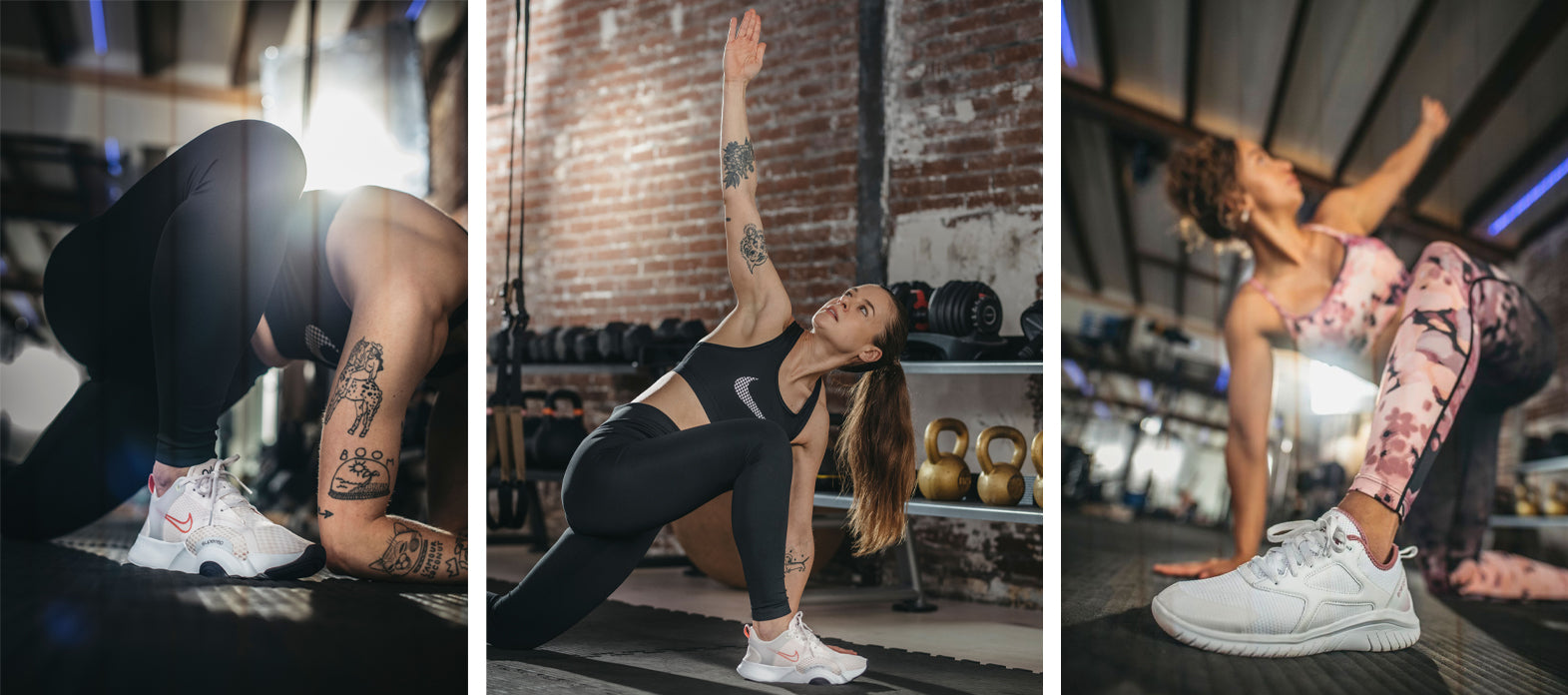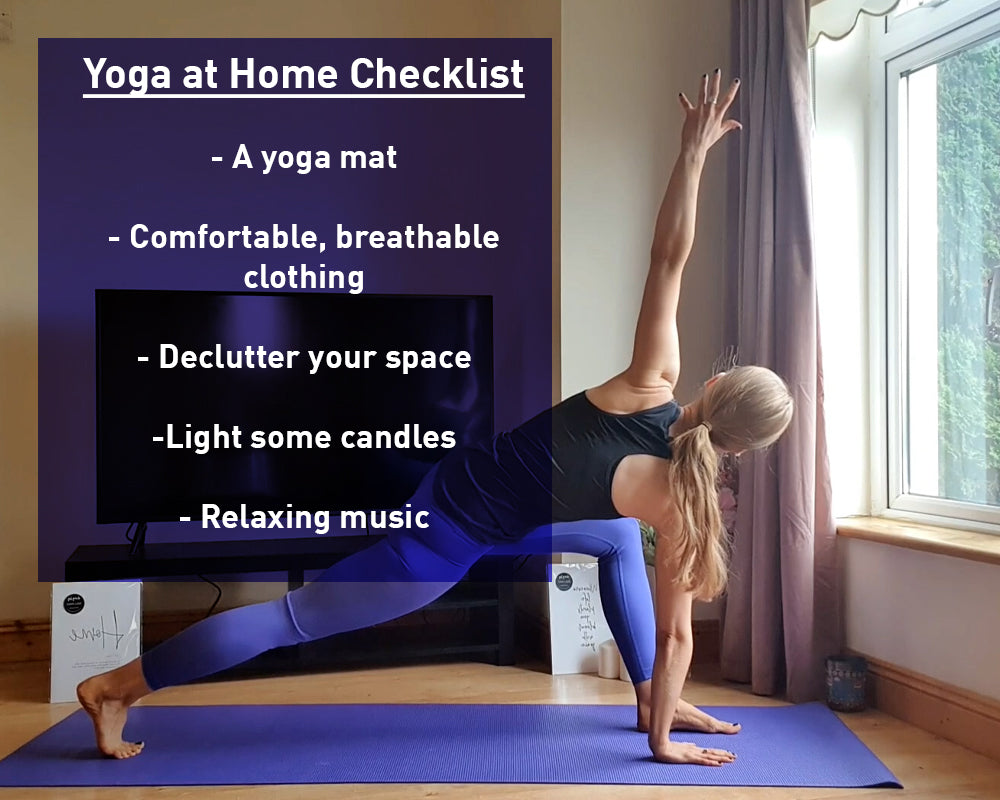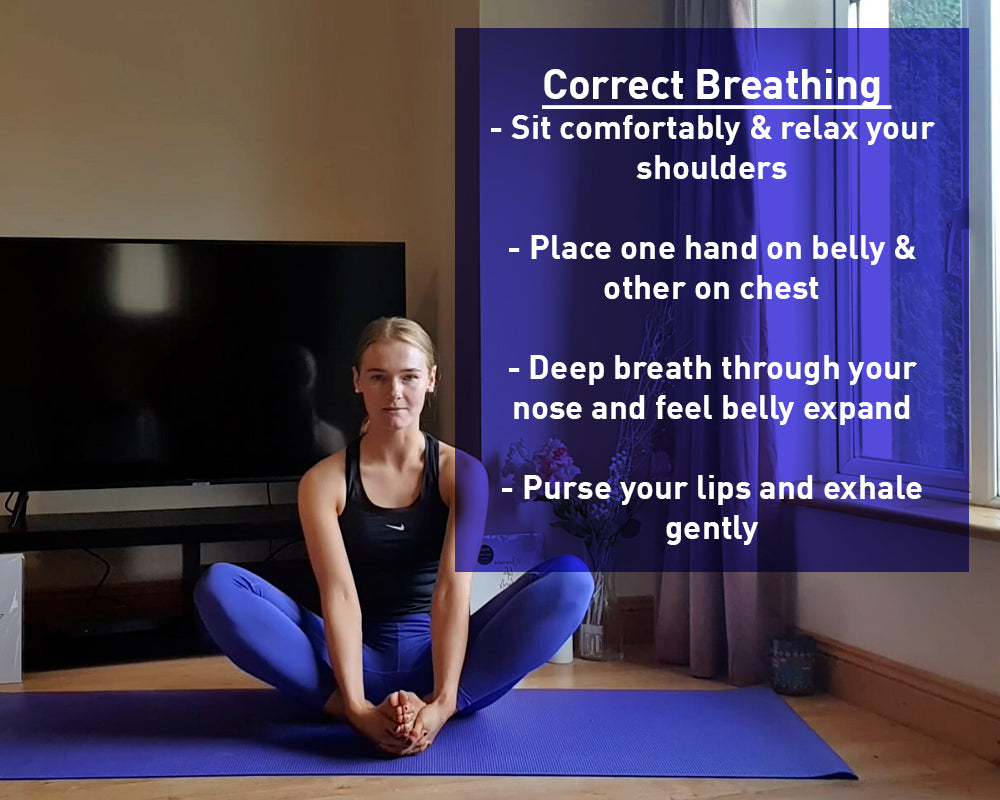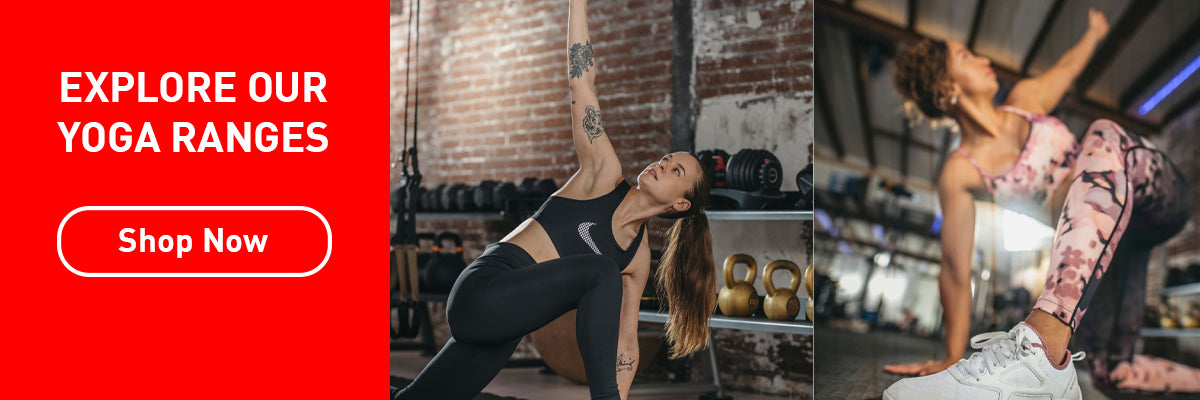
The Ultimate Guide to Yoga At Home
Doing yoga at home has a multitude of mental and physical benefits for your body and mind.
That’s not to mention just how practical and easy-to-do the workouts are from the safe and comfortable confines of your house.
Intersport Elverys is going to make that even easier for you.
Our expert staff member and qualified yoga instructor, Roberta Harrington of @bobbybyrobertaharr, is going to take you through everything you need to know about starting your yoga at home journey.
Check out her free YouTube class focusing on Sports Yoga for Performance and Recover HERE.
This blog will cover all the basics you need to know about doing yoga at home: What you need; types of yoga; correct breathing; and where you can find some great routines- G to get you started.
Roberta will also have some more detailed yoga content and workouts here, like some of the Basic Yoga Poses for Beginners.
Take it away, Roberta!

What is yoga?
“So, yoga is a spiritual based practice which focuses on bringing harmony between mind and body.
“It’s a combination of asanas (or postures) and breathwork, and it allows an individual to relax their mind, become fitter and more flexible, increase strength, to tone, improve breathing and much more.”
Doing yoga at home
“I would recommend just keeping it simple, especially if you’re a beginner and just testing the waters!
“All you need is a yoga mat – no need for an expensive one until you know you’re enjoying what you’re doing – and then some comfortable and breathable clothing and a quiet space to practice.
“Make sure you declutter the space and feel free to light some candles, dim the lights and put on some relaxing music to make the space your own. There are some great yoga playlists on Spotify too.
“If you are just starting out with yoga and have had a recent injury, mat thickness can make a real difference. For example, I had an ALC injury in the past and after the surgery I found that my right knee was very sensitive, due to the use of a thin mat. It made it almost impossible to hold or to enjoy postures like low lunge for example.
“Thicker mats provide more cushioning for sensitive areas of the body, so keep that in mind when you are choosing your mat. Some props can also be very beneficial for those recovering from injury like yoga blocks for hamstring injuries or yoga straps for shoulder injuries. Props are equally as useful for beginners too.”
Benefits of doing yoga at home
“Sometimes heading to a yoga studio can feel like a daunting prospect for beginners, whereas home is generally a space safe for every individual, meaning it is a great place to start your yoga journey until you build confidence and focus on getting the basics rights.
“There is an amazing selection of yoga classes and courses available on YouTube and Instagram now which means that you can save money and take classes on your own schedule, instead of running and racing to make a live class. Having the option to choose from a wide range of instructors is always a huge benefit too, meaning that you can change styles and intensities as you please.
“Personally, however, as a teacher I would say that I crave that studio space because you can really feed off the energy of the people around you. And for beginners, you can see all the different progressions within the class.
“So there’s benefits to both.”
How to breath correctly in yoga
“We look for deep belly breathing in yoga, also known as diaphragmatic breathing and abdominal breathing, which is bringing the breath deep down into the belly, moving beyond shallow chest breathing.
“This is a very calming style of breathing and is especially beneficial for stress reduction.
“It helps to increase oxygen intake and lung capacity, which is crucial for fitness and athletes.
“This can be practiced on its own, or as a warm up or as a cool down breathing exercise in yoga.
“Follow these steps:”
- Sit or lie in a comfortable seated position and relax your shoulders
- Place one hand one your belly and another on your chest. Close your eyes if you wish
- Take a deep breath through your nose, moving the breath into your abdomen and feeling your belly expand. The chest should see little to no movement
- Purse your lips (as if drinking through a straw), press gently on your stomach and exhale slowly
- Repeat these steps several times
Ujjayi Breath
“This is a really popular breathing technique in yoga. It helps improve concentration, quietens the mind and releases tension in the body. Inhalation and exhalation are done through the nose.”
- Keep your mouth closed
- Constrict your throat to the point that your breathing makes a tidal wave sound, or like waves meeting the shore
- Control your breath with your diaphragm
- Keep your inhalations and exhalations equal in duration
Different types of yoga
“There are lots of different types of yoga, so enjoy the process of finding your style!
“I’ll take you through some of the main styles now.”
Hatha yoga
“A style of yoga where we hold postures for 3-5 breaths. The class may be full body focused or it may be centred about a particular charka or body area for example. Some instructors will take you through breathing techniques in a class too.
“Hatha is typically practiced more slowly, with more static posture holds than a Vinyasa flow or Ashtanga class for example. The teacher may include mantras, visualisations, hand gestures and cleansing techniques as part of the class. Sports yoga is hatha based.”
Vinyasa yoga
“Vinyasa is often seen as the most athletic or dynamic style of yoga. Movement is performed with the breath. We often say, ‘one breath, one movement’. It is a creative style of yoga where generally no two classes are the same. It is a great style to improve fitness levels, build strength and to tone.”
Power yoga
“A fast-paced style of yoga that’s focused on building strength and endurance… although it requires mindfulness and focus on your breathing, power yoga is more dynamic than meditative forms of yoga and provides a good cardio and strength-training workout.
“You will sure to sweat lots!”
Yoga Nidra
“Yoga Nidra is a form of guided meditation also known as ‘yogic sleep’ or ‘effortless relaxation’.
“It’s usually practiced lying down with a teacher guiding the session. The practice draws our attention inwards, and we learn to surf between the states of wakefulness and sleep, where our body finds its natural state of equilibrium (homeostasis) – the breath balances and becomes quiet, unconscious and conscious aspects of the mind reveal themselves, and we fall into an innate state of deep, blissful awareness.” This is a great style of yoga to practice if you struggle to fall asleep or if you have poor overall sleep quality.”
Ashtanga
“Ashtanga Vinyasa Yoga is a physically demanding style of yoga.
“Students follow a set sequence of postures each time, gradually progressing through the series. Ashtanga Vinyasa Yoga emphasises the linking of movement and breath (vinyasa), Ujjayi breathing and bandhas (energy blocks).”
Bikram/Hot
“This is named after Bikram Choudhury and features a sequence of set poses in a sauna-like room. The sequence involves 26 basic postures, with each one performed twice. There is a strong focus on alignment in this style.
“Be prepared to sweat – LOTS!”
Hot yoga
“This is a vigorous form of yoga performed in a very warm and humid studio. There are many different types of hot yoga classes.”
Yin Yoga
“This targets your deep connective tissues.
“It’s slower and more meditative, giving you space to turn inward and tune into both your mind and the physical sensations of your body.
“Because you’re holding poses for a longer period of time than you would in other traditional types of yoga, yin yoga helps you stretch and lengthen those rarely-used tissues while also teaching you how to breathe through discomfort and sit with your thoughts.
“Through deep poses, we can open up any blockages and allow energy to flow freely through the body.”
Restorative
“This encourages physical, mental and emotional relaxation. Appropriate for all levels, restorative yoga is practiced at a slow pace, focusing on long holds, stillness and deep breathing.
“Unlike more active yoga styles such as vinyasa or Bikram, you can expect to hold a pose for 5 minutes or more, only performing a handful of poses in one restorative yoga session.”
Where to find lessons?
“You will find lots of free yoga classes over on my Instagram @bobbybyrobertaharr.
“Feel free to get in touch with any content ideas you have or what you would like to see.
“But there’s so much out there at the minute. Even if you just look up the various types of yoga on YouTube or Instagram or search on IG via hashtags – you can find a wide variety of content.”
Conclusion
So there you have it.
If Roberta has inspired you to start your yoga journey, then check out our training range here or below to help you get started.
If not, well there’s plenty more content coming to change your mind



